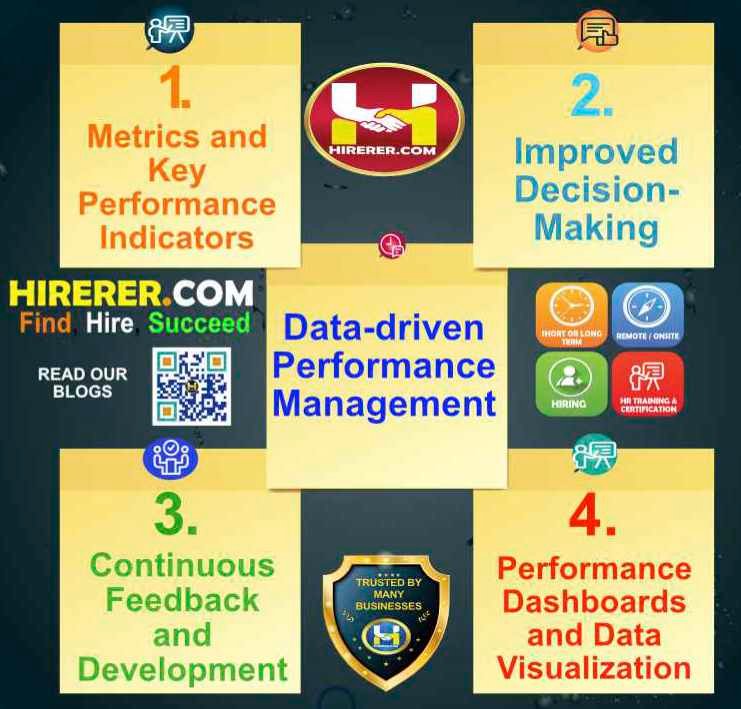
Empower Organization Success with Data-Driven Performance Management
In today's fast-paced and competitive business environment, companies are constantly seeking ways to improve performance, drive growth, and stay ahead of the curve. One powerful tool that organizations are increasingly turning to is data-driven performance management. By harnessing the power of data and analytics, companies can gain valuable insights into their operations, identify areas for improvement, and make more informed decisions to achieve their strategic objectives.
At its core, data-driven performance management involves collecting, analyzing, and leveraging data to measure and improve individual, team, and organizational performance. Rather than relying solely on intuition or anecdotal evidence, data-driven performance management allows companies to make evidence-based decisions, backed by quantitative insights and analysis.
One of the key benefits of data-driven performance management is its ability to provide a holistic view of organizational performance. By collecting data from various sources across the business, including sales metrics, operational data, customer feedback, and employee performance evaluations, companies can gain a comprehensive understanding of their strengths, weaknesses, and opportunities for improvement.
Moreover, data-driven performance management enables companies to identify trends, patterns, and correlations that may not be immediately apparent through traditional methods of performance evaluation. By analyzing historical data and tracking performance metrics over time, companies can identify areas of underperformance or inefficiency, as well as factors that contribute to success.
Another significant advantage of data-driven performance management is its ability to provide actionable insights for decision-making. By leveraging advanced analytics tools and techniques, companies can identify actionable insights and recommendations based on performance data. Whether it's optimizing sales strategies, improving operational efficiency, or enhancing employee productivity, data-driven insights can inform strategic decision-making and drive meaningful results.
In the following blog series, we'll explore the various aspects of data-driven performance management, including best practices for collecting and analyzing data, strategies for leveraging data insights to improve performance, and real-world examples of companies successfully implementing data-driven performance management initiatives.
Join us as we delve into the world of data-driven performance management and discover how companies can unlock the power of data to drive success, achieve their goals, and stay ahead of the competition.
Hirerer.com -SMARTLY BUILT for Small & Medium Business
HR Dedicated Platform, FREE Job Portal, Freelancers Opportunities, HR Training & Certifications, Rent-A-HR for immediate needs
Leveraging data-driven performance management can provide several benefits to companies, helping them make more informed decisions, identify areas for improvement, and drive organizational success. Here are some thoughts on how companies can effectively utilize data-driven performance management
1. Setting Clear Objectives and Key Performance Indicators (KPIs): - Define clear and measurable objectives for individual employees, teams, and the organization as a whole. These objectives should be aligned with the company's strategic goals and accompanied by specific KPIs that can be quantitatively measured.
2. Collecting Relevant Data: -Implement systems and processes for collecting relevant performance data across various aspects of the business, including sales metrics, productivity indicators, customer satisfaction scores, and employee engagement surveys. Ensure that data collection methods are standardized and consistent to facilitate meaningful analysis.
3. Utilizing Performance Dashboards and Analytics Tools: -Invest in performance dashboards and analytics tools that provide real-time insights into key performance metrics. These tools can aggregate and visualize data from multiple sources, allowing managers and employees to track progress, identify trends, and make data-driven decisions.
4. -Identifying Performance Trends and Patterns: Analyze performance data over time to identify trends, patterns, and correlations. Look for factors that contribute to high performance as well as areas of underperformance or inefficiency. Use this information to inform decision-making and strategic planning processes.
5. Providing Continuous Feedback and Coaching: - Use performance data as the basis for providing continuous feedback and coaching to employees. Highlight areas of strength and areas for improvement, and work collaboratively with employees to set goals and develop action plans for professional development.
6. Identifying High Performers and Potential Talent: - Use performance data to identify high-performing employees and potential talent within the organization. Recognize and reward top performers, and provide opportunities for advancement and career growth based on demonstrated performance and potential
7. Supporting Data-Driven Decision Making: - Supporting Data-Driven Decision Making: Encourage managers and leaders to make data-driven decisions based on performance metrics and insights. Provide training and resources to help managers interpret and analyze performance data effectively, and foster a culture that values evidence-based decision making.
8. Iterating and Improving Processes: - Iterating and Improving Processes: Continuously review and iterate on performance management processes based on feedback and performance data. Identify areas where processes can be optimized or streamlined, and implement changes to improve efficiency and effectiveness.
9. Ensuring Data Security and Privacy: - Ensure that performance data is collected, stored, and managed in compliance with relevant data security and privacy regulations. Implement appropriate safeguards to protect sensitive employee information and ensure confidentiality.
10. Promoting Transparency and Accountability: - Foster a culture of transparency and accountability by sharing performance data and insights with employees at all levels of the organization. Encourage open communication and dialogue around performance expectations, goals, and outcomes.
THE CONCLUSION :
By leveraging data-driven performance management, companies can gain valuable insights into their operations, drive continuous improvement, and ultimately achieve their strategic objectives more effectively.
Note. Unauthorized use and/or duplication of this material without express and written permission from this website author and/or owner is strictly prohibited. Excerpts and links may be used, provided that full and clear credit is given to HIRERER.COM with appropriate and specific direction to the original content
2022 - 2024 All rights reserved by Hirerer.com



